How to organise organisations in groups
Some background
What is an organisation?
An organisation refers to a specific entity or entity type involved in aviation safety reporting. Organisations represent the various reporting entities such as, airlines operators, aerodromes, maintenance organisations, air traffic control, and other entities within the aviation industry. Each organisation is assigned a unique identifier and is associated with specific attributes.
In E2, organisations are managed by the Authorities and the users, also known as reporters, are managed by both the Authorities and the Organisation managers. It is reporters that are responsible for providing information about accidents or incident by using the forms made available to them.
Reports created by an organisation user are visible to all reporters of his organisation. No organisation has access to another organisation’s reports.
How to name an organisation
Giving a meaningful name to an organization serves several important purposes. It helps to easily identify the organisation's identity and its field of activity.
Every organisation has its own unique identifier; it is good practice to include this identifier in the organisation’s name in e2. Organisations tend to change names from time to time, while their unique identifier remains the same.
Examples:
· CH.AOC.xxxx // Mountain xxx AG
· EASA.145.xxxx // Super Maintenance of Aircraft
· EASA.21J.xxxx // Continental Technologies Design GmbH
· BE/ATO-xxxx // Fantastic Air Academy
· …
By including the identifier in the name of the organisation in E2, it is easier to identify the type of organisation and eventually to add them to an organisation group.
What is an organisation group?
How to name an organisation group
Giving a meaningful name to an organization group is key. There are no golden rules as how to name the groups. Yet, consider the specific goals for which an organisation should be in a certain group.
Examples of grouping by activity
· A group containing organisation à AOC Holders
· A group containing aerodrome operators à ADR operators
· A group containing Ground handling organisations à Ground handling
What is a parent organisation?
The parent organization in ECCAIRS2 facilitates data analysis and reporting by providing a framework to track and analyse safety-related information based on the organisational structure of the overhead organisation.
An organisation such as an airline group having multiple AOCs may want to see in one glance what has been reported and to whom it has been reported to. So, providing a holistic view of safety-related data within the organization's hierarchy.
How to name a parent organisation
As there may be more parent organisations within an Authority, it is important to give a correct and meaningful name, for instance the name of the overarching or umbrella company.
How to add an organisation?
Depending on the permissions the option to manage organisation becomes available on the home page.
Create the organisation details
Click on New organisation
There are two distinctive parts
The fields marked with a red asterisk are mandatory.
Organisation details
· Organisation name: As mentioned before, it is key to give the organisation a meaningful name allowing for an easy grouping of organisations later.
· Responsible NAA: is automatically filled out as by logging in the NAA is already known
· Phone: is optional
· Responsible contact (optional): Is the contact person within the organisation that can be contacted in case of need, it doesn’t need to be an e2 user
o Full name: full name of the responsible contact
o Email address: email address of the responsible contact
o Phone: Telephone number of the responsible contact
Organisation manager details
At the same time the organisation is created, an organisation manager is created too. This person will manage the organisation’s account from with the organisation. This user has the permission to create additional organisation managers and reporters
· Username: Username need to be unique cross Eccairs 2, that is it cannot be used by any other Authority. This can be sometimes a burden as many people have the same names. As a suggestion, the approval number of the organisation can be used. This has the advantage that it is unique, and that the manager of the organisation remembers his approval number.
Example username = EASA.21J.9876
· Description: is an optional field allowing to enter a user’s description
· Creation date & Modification date; these dates are system generated and show when the account was created/last modified
· Last Activity: this shows when the user last logged on to E2
· Disabled: when a new account is created, the account is disabled until the user has activated the account. The account can also be disabled/enabled manually by the organisation manager
· Blocked: When a user has failed too many times to login to the system (wrong password), then the account is blocked and needs to be unblocked by the organisation manager.
An account is also automatically blocked after 90 days of inactivity. In needed, it is to be unblocked by the organisation manager.
· First Name and Last Name: are both mandatory fields
· Phone: is an optional field containing the telephone number of the user
· Email Address: Is the email address of the user. To this email address the activation email will be sent. It is key that this is correct, if not the user will not be able to activate the account
· Job title: is an optional field that can be used to enter the user’s job title
The activation email is sent as soon as the organisation is saved to the data base
Create an additional organisation user
For this opening the organisation for edit is required. Besides modifying some fields, this window also allows to create addition users
ECCAIRS 2 distinguishes two types of users.
1. The human user
A human Eccairs2 user refers to an individual who interacts with and utilizes Eccairs 2 to enter incident reports for his organisation and/or manages the organisations account. In this context, "human user" typically refers to reporters who use Eccairs2 for reporting purposes.
The information to be entered is like the information entered when creating the organisation manager when creating the organisation account:
· Username: Username need to be unique cross Eccairs 2, that is it cannot be used by any other Authority. This can be sometimes a burden as many people have the same names.
· Description: is an optional field allowing to enter a user’s description
· Creation date & Modification date; these dates are system generated and show when the account was created/last modified
· Last Activity: this shows when the user last logged on to E2
· Disabled: when a new account is created, the account is disabled until the user has activated the account. The account can also be disabled/enabled manually by the organisation manager
· Blocked: When a user has failed too many times to login to the system (wrong password), then the account is blocked and needs to be unblocked by the organisation manager.
An account is also automatically blocked after 90 days of inactivity. In needed, it is to be unblocked by the organisation manager.
· First Name and Last Name: are both mandatory fields
· Phone: is an optional field containing the telephone number of the user
· Email Address: Is the email address of the user. To this email address the activation email will be sent. It is key that this is correct, if not the user will not be able to activate the account
· Job title: is an optional field that can be used to enter the user’s job title
The activation email is sent as soon as the organisation is saved to the data base
When a user requests his account to be deleted, then both the blocked and the Disabled switches are set. In addition, all fields will be void except the username.
2. The machine-to-machine user
A machine-to-machine (M2M) user refers to an automated system or device that interacts with Eccairs2 without the need for human intervention. In M2M communication, machines, or devices exchange information via so called Application Programming Interface, which is a set of definitions, protocols and methods for building and integrating application.
Unlike the human user, the M2M users will use a token to logon to Eccairs2 and can not gain access to the font end of the application
· Organisation: is the organisation in which the M2M user is created
· Username: the user is system generated, is unique across Eccairs2 and cannot be changed
· Description: is an optional field allowing to enter a user’s description
· Creation date & Modification date; these dates are system generated and show when the account was created/last modified
· Last Activity: this shows when the user last logged on to E2
· Disabled: when a new account is created, the account is disabled until the user has activated the account. The account can also be disabled/enabled manually by the organisation manager
· Blocked: When a user has failed too many times to login to the system (wrong password), then the account is blocked and needs to be unblocked by the organisation manager.
An account is also automatically blocked after 90 days of inactivity. In needed, it is to be unblocked by the organisation manager.
· Email address: Is the email address of the user. To this email address the activation email will be sent. It is key that this is correct, if not the user will not be able to activate the account
· IP address: when a M2M user connect to E2, the IP address from which it tries to access E2 needs to be whitelisted. This is to ensure that only recognized machine gain access to E2
Only 1 IP address can be entered in this field. If an organisation requires more than 1 IP address, then these need to be added to the authority whitelist
· Role: is the role that is assigned to the M2M user and cannot be changed.
How to add an organisation group?
Depending on the permissions the option to manage organisation groups becomes available on the home page.
How to add organisations to an organisation group?
By clicking on new organisation group, the group editing form becomes available.
Name: Is the name of the group
Description: contains a short description of the group?
There are two panes, The left pane contains all organisation within the Authority and the right pane contains all selected organisations within the group.
Adding and removing organisations can be done by selecting the organisation from the appropriate pane and clicking on the action button.
When creating or editing another group, an extra icon will appear next to those organisations that are already within another group. An organisation can only be in one group.
If an organisation residing in another group is added to the current group, a warning will appear. If proceeded, then the organisation is added to the current group.
How to edit an organisation group?
When hovering over the list a pencil and a trashcan icon will appear at the end of the line, the pencil will open the edit form, the trashcan will delete the group.
Edit Details
Name: Is the name of the group
Description: contains a short description of the group?
There are two panes, The left pane contains all organisation within the Authority and the right pane contains all selected organisations within the group.
Adding and removing organisations can be done by selecting the organisation from the appropriate pane and clicking on the action button.
If an organisation residing in another group is added to the current group, a warning will appear. If proceeded, then the organisation is added to the current group.
Edit Webforms
A form for incident reporting is a digital tool that allows reporters to report any incidents or accidents that occurred. The purpose of incident reporting is to help identify potential safety hazards and prevent future incidents.
Incident reporting forms typically ask for details about the nature of the incident, including the type of aircraft involved, the location and time of the incident, the weather conditions, and any other relevant details. They may also ask for information about the individuals involved in the incident, including their, job titles, and contact information.
Eccairs2 (E2) provides 5 standard reporting forms that can be made available to organisations, they are always available and can be used by any Authority and assigned to any organisation.
1. Technical
2. General Aviation
3. Aerodrome
4. ATM/ANS
5. Flight Operation
In many cases these 5 general forms are sufficient to allow organisation reporters to adequately send in their reports. Yet as these are standard forms, they may ask for irrelevant information and so clutter the form.
E2 offers Authorities to create their own web forms which will better cover their needs. These Authority defined forms will become available to be assigned to organisations when enabled.
By default, any organisation has access to all enabled forms, yet this implies that reporters must select the form and may inadvertently start coding the report in a wrong form.
To circumvent this, E2 can limit the number of forms users have access to. In the example above, here is in addition an Authority developed form Part 145.
In the example above, the technical and Part 145 forms will be available to all users of the organisations in the organisation group. So, to limit the number of forms they can select from.
The advantage of assigning Authority-defined forms to an organisation group is that they allow organisations to use customised data entry forms to suit their specific needs and requirements. Tailored forms to collect the desired information can enhance the quality and accuracy of the data entered. These customisations help to eliminate unnecessary fields and ensures that essential data is captured consistently by all organisation within the group.
Edit Auto filled Attributes
Auto-filled attributes in E2 provide several advantages that contribute to more efficient data entry and improved data quality. Auto-filled attributes automatically populate certain fields with pre-defined values. This saves time for users by reducing the need for manual input. It minimizes repetitive data entry tasks, especially for common or recurring information or information that is already known
Any attribute, whether from the ECCIARS taxonomy or Custom Taxonomy can be chosen to be automatically filled out on the form.
Select the attribute that is to be automatically filled from the left pane. Either by using the search capability or by expanding the taxonomy tree.
Clicking on add will move the attribute to the right pane where it can be edited.
With the pencil a value to be used in the automatic filling can be entered.
There is no limitation in the number of attributes that can be automatically filled.
Even though an attribute has a value assigned to be automatically filled, the value will not be assigned to the attribute if the attribute is not on the form.
How to create a parent organisation?
Depending on the permissions the option to manage parent organisations becomes available on the home page.
By clicking on new parent organisation, the configuration form is shown
General details
Name: As there may be more parent organisations within an Authority, it is important to give a correct and meaningful name, for instance the name of the overarching or umbrella company.
Description: this free text field contains a short description of which organisations are in the parent organisation.
Responsible NAA: this is automatically filled out with the Authority in which the Parent organisation is created.
Phone: is a telephone where the Parent organisation can be reached.
Responsible contact information
Although these are optional fields, it is important to have the details of the contact person within the parent organisation. This person doesn’t necessarily have to be an E2 user
Full Name: is the first and last name of the responsible contact
Email address: is the email address of the responsible contact
Phone: is the telephone number of the responsible contact
Organisations
This area contains 2 panes.
On the left all known organisations are shown. If an organisation is already part of another parent organisation, then the name of the parent organisation is shown in the “Current Group” column of the left pane:
Adding/removing organisations from the parent group is done by selecting the appropriate organisations and executing the add/remove action.
In case an organisation is added which is already part of another parent organisation, a warning message will be shown.
If decided to continue, the organisation will be removed form the parent organisation and added to the current parent organisation.



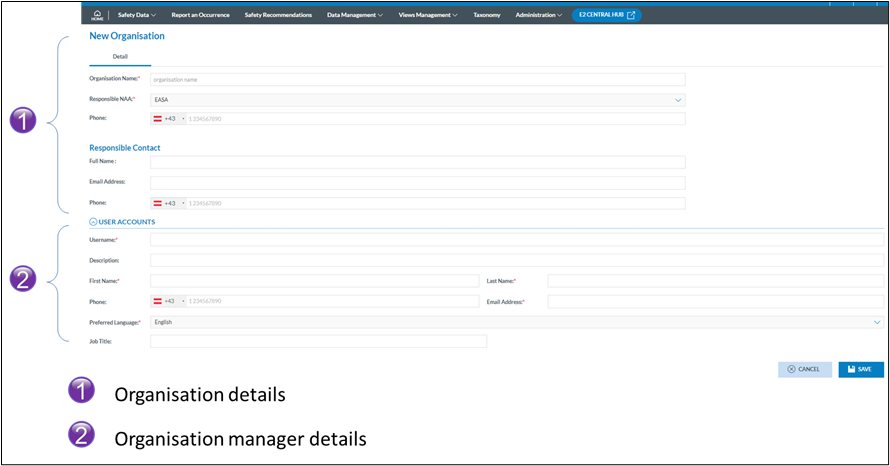
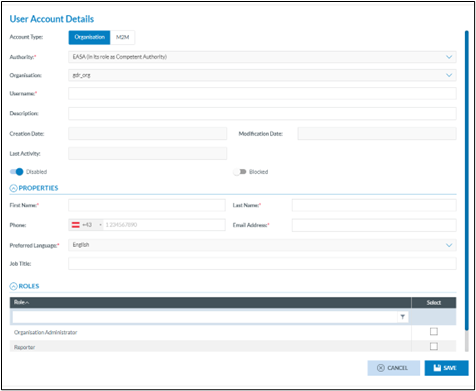





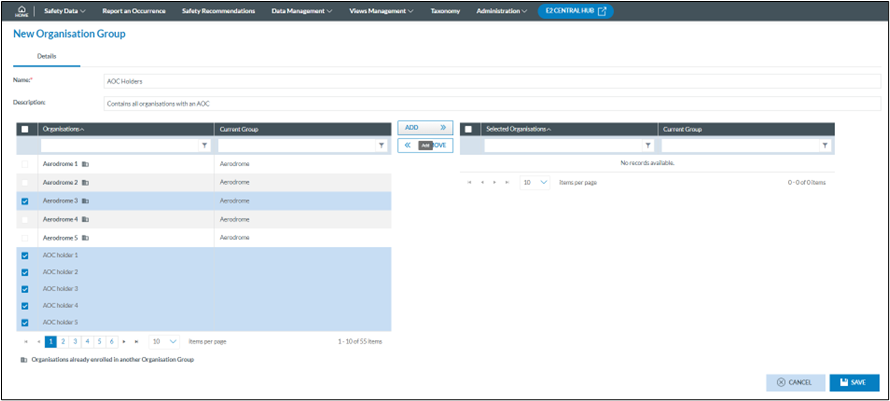





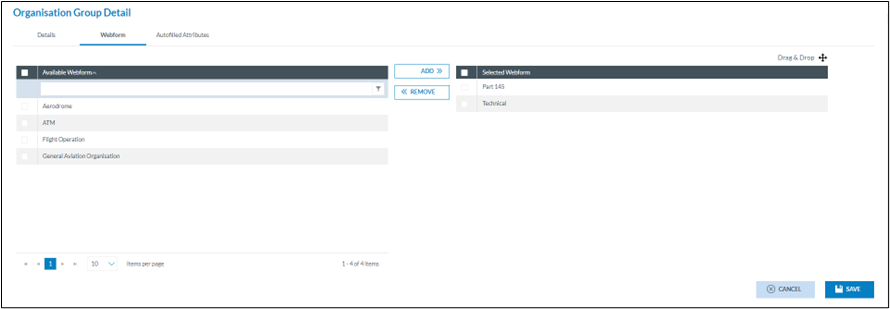
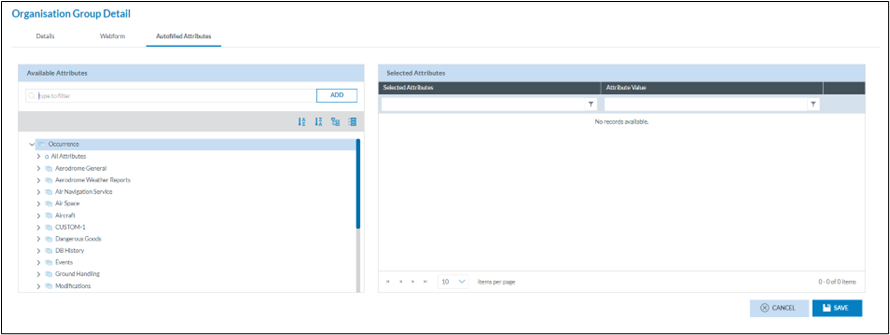

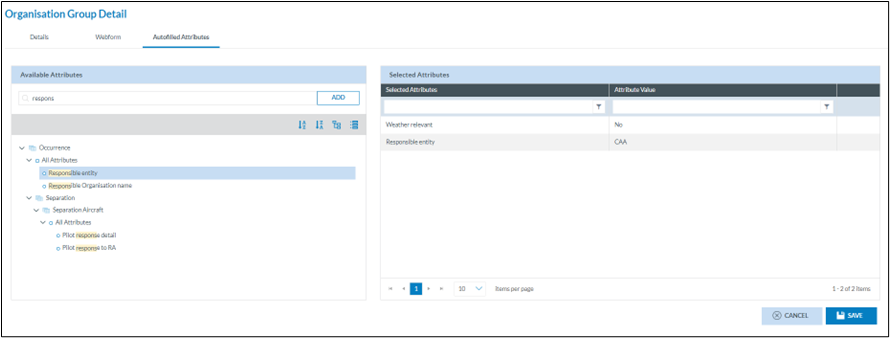


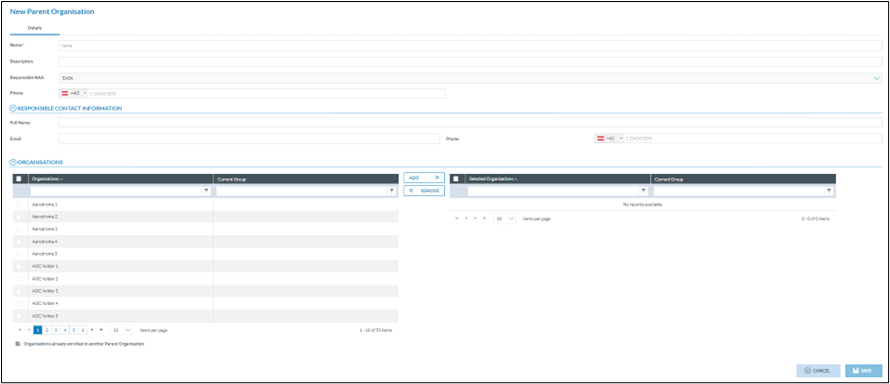


No comments to display
No comments to display